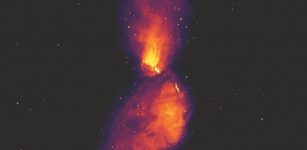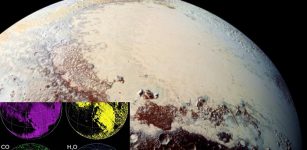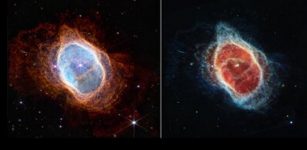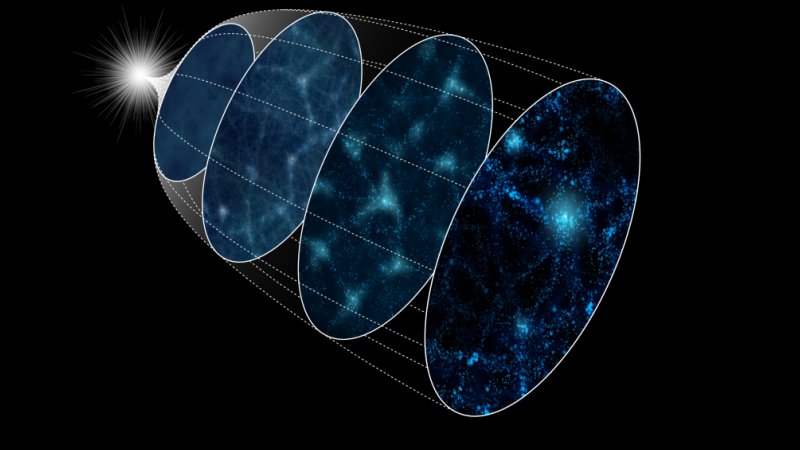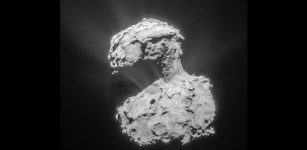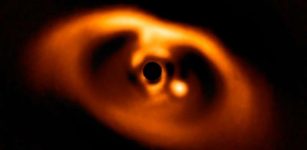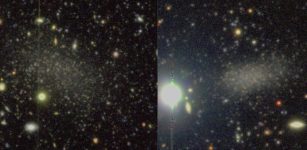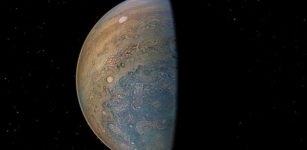Unexpected Ultraviolet Aurora Detected At A Comet
Eddie Gonzales Jr. – MessageToEagle.com – For the first time, an aurora in the ultraviolet spectrum around a comet was observed by researchers using data from Southwest Research Institute-led instruments aboard ESA’s Rosetta spacecraft.
 Data from Southwest Research Institute-led instruments aboard ESA’s Rosetta spacecraft helped reveal unique ultraviolet auroral emissions around irregularly shaped Comet 67P. Credit: ESA/Rosetta/NAVCAM
Data from Southwest Research Institute-led instruments aboard ESA’s Rosetta spacecraft helped reveal unique ultraviolet auroral emissions around irregularly shaped Comet 67P. Credit: ESA/Rosetta/NAVCAM
“Charged particles from the Sun streaming towards the comet in the solar wind interact with the gas surrounding the comet’s icy, dusty nucleus and create the auroras,” SwRI Vice President Dr. Jim Burch who leads IES, said in press release.
“The IES instrument detected the electrons that caused the aurora.”
The envelope of gas around 67P/C-G, called the “coma,” becomes excited by the solar particles and glows in ultraviolet light, an interaction detected by the Alice FUV instrument.
“Initially, we thought the ultraviolet emissions at comet 67P were phenomena known as ‘dayglow,’ a process caused by solar photons interacting with cometary gas,” said SwRI’s Dr. Joel Parker who leads the Alice spectrograph.
“We were amazed to discover that the UV emissions are aurora, driven not by photons, but by electrons in the solar wind that break apart water and other molecules in the coma and have been accelerated in the comet’s nearby environment. The resulting excited atoms make this distinctive light.”
Dr. Marina Galand of Imperial College London led a team that used a physics-based model to integrate measurements made by various instruments aboard Rosetta.
“By doing this, we didn’t have to rely upon just a single dataset from one instrument,” said Galand, who is the lead author of a Nature Astronomy paper outlining this discovery.
“Instead, we could draw together a large, multi-instrument dataset to get a better picture of what was going on. This enabled us to unambiguously identify how 67P/C-G’s ultraviolet atomic emissions form, and to reveal their auroral nature.”
“I’ve been studying the Earth’s auroras for five decades,” Burch said. “Finding auroras around 67P, which lacks a magnetic field, is surprising and fascinating.”
At Earth, auroras are formed when charged particles from the Sun follow our planet’s magnetic field lines to the north and south poles. Similar phenomena have been seen at various planets and moons in our solar system and even around a distant star.
SwRI’s instruments, the Alice far-ultraviolet (FUV) spectrograph and the Ion and Electron Sensor (IES), helped in detecting these novel phenomena at comet 67P/Churyumov-Gerasimenko (67P/C-G).
Written by Eddie Gonzales Jr. – MessageToEagle.com Staff

